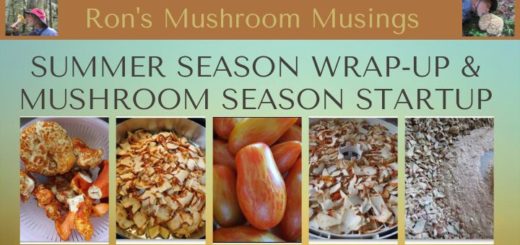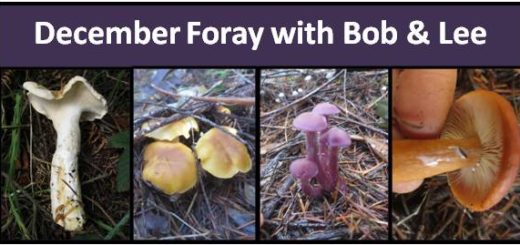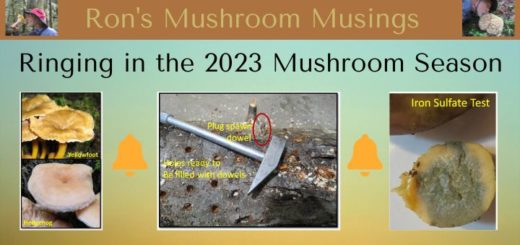Many Mushroom Experiments

Over the last several years I may have gone a little overboard with inoculating every log Sandy and I found with some species of mushroom. The list of species included the usual suspects like the Oyster Mushroom (Pleurotus ostreatus), Shiitake (Lentinula edodes), Chicken of the Woods (Laetiporus conifericola), and the White Elm Mushroom (Hypsizygus ulmarius). I’ve also used various substrate materials placed into large black nursery pots to cultivate the Garden Giant (Stropharia rugoso-annulata), Maitake (Grifola frondosa), the Almond Mushroom (Agaricus subrufescens), Chestnut Mushroom (Pholiota adiposa), and Brick Cap (Hypholoma lateritium).
Once these fungal species become established it was easy to just take out a chunk of their mycelium and move it into another pot with fresh growing medium. I actually kept the Almond Mushroom growing for three years until I tired of moving the tub around to try and maintain a suitable mycelium growing temperature. Being a warm weather species, it will not survive cold temperatures nor will it fruit. The mycelium will develop slowly at around 60? Fahrenheit but it does much better when temps are at least 80?. During our first year, we brought the tub into our house in the fall to maximum growing and fruiting. Well, the Almond Mushroom grows on composted organic matter so that didn’t go well at all. It wasn’t so much the aroma as it was the many (and I mean many) insects hatching out of that compost to enjoy our warm inside temperature. For the next two years it spent its winters in the garage so the substrate wouldn’t freeze and insects were less of a nuisance. By year three it was time to move on.
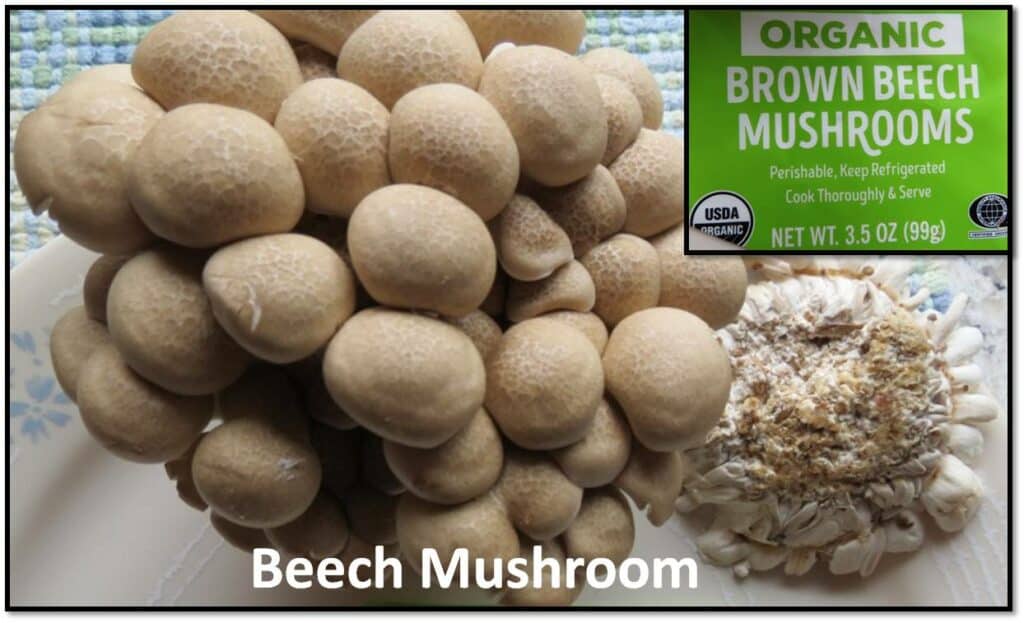
So, it would be perfectly reasonable to think that with our many experiments and a yard already filled with wood and nursery pots, I’d be done. Au contraire mon ami, my obsession with all things fungi has only gotten worse. In email exchanges I’ve had with Mary Ellen Kozak from Field and Forest, she was very interested in a mushroom species the Japanese call Buna-Shimeji. It also exists in North America where it is known as the Beech Mushroom (Hypsizygus tessulatus).
According to observations on inaturalist.org, it has been found here in the northwest but is far more prevalent in the northeast. If you are unfamiliar with this mushroom, it has recently gained popularity and can be found at a number of our grocery stores and at the downtown Saturday Market from the Mushroomery. We have tried this mushroom several times and we both enjoy its nutty, savory flavor and slightly crunchy texture.

The problem I had was the mushrooms are all in a cluster attached to a base that still had visible mycelium growing. It was like finding a volunteer tomato plant from the year before that you just can’t pull up and throw out. You really didn’t know what plant it came from but you know it might produce the best tomato you’ve ever eaten. With that logic, I knew I had to find a way to keep this chunk of mycelium alive and try to get it to fruit. I started with what nursery people call a square black crinkle pot. It is slightly under 1-gallon in size and it’s made from fairly thin plastic. The substrate I created was composed of sterilized rye grain, oak sawdust, and a small amount of straw.
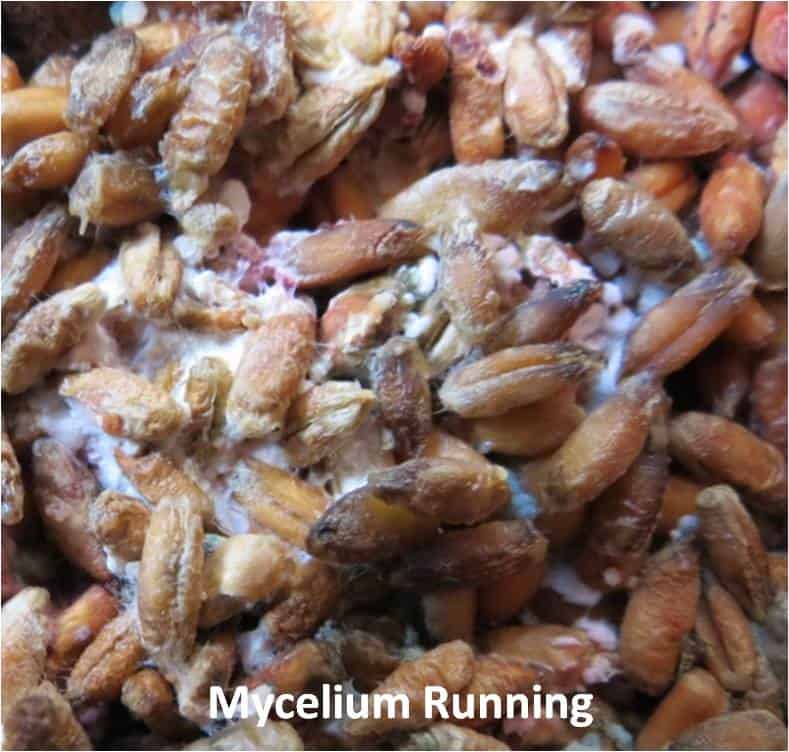
Since rye grain is the most nutritious and easily digested by most saprobic fungi, I surrounded the base chunk with it. I then filled the rest of the pot with the substrate mixture, topping it off with more rye grain. After several months of incubation there is now evidence that the mycelium has reached the top of the container. As you can see from this picture, the rye grains at the top are now being colonized by the mycelium. I have no idea if this will result in a flush of mushrooms but at least there is proof that it is alive. This particular chunk of Beech Mushroom came from a pack I purchased at Natural Grocers. Since then, I’ve bought a pack at Trader Joe’s and from Dustin at the Mushroomery.
And in case you’re wondering, the base of both these clusters of Beech Mushroom have been placed into crinkle pots using the same technique as the first experiment. You know the old saying, waste not want not. I just couldn’t bring myself to toss out what might become the best Beech mushroom we’ve ever eaten.
Take care and enjoy this spring-like weather, Ron

